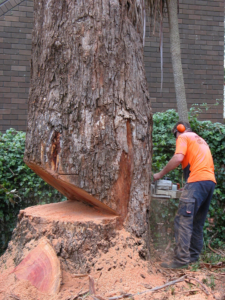A dock is a platform that extends over water. It provides a safe place for boats to be moored and gives people access to the water for recreation.

If you’re planning on building a dock, you have a lot of decisions to make. Luckily, the right materials and guidance can help you build a beautiful and long-lasting dock. Contact Dock Builders Charleston SC for professional help.
The materials you choose when building a dock will impact the safety, durability and longevity of your structure. It’s important to take into account how you plan on using your dock and what your water conditions are like before selecting a material. We recommend working with experienced pier and dock builders to ensure you select the right materials for your environment.
Residential docks experience lighter usage and typically cater to personal needs. They are generally built from materials that offer a balance of affordability and durability, such as pressure-treated lumber or composite decking. They should also be treated to the appropriate level for your type of water. If you’re building in a freshwater lake, use a minimum of.60 pcf, while saltwater requires at least 2.5 pcf.
Commercial docks experience more frequent use and require stronger, longer-lasting materials than residential ones. The best choice for a commercial dock is aluminum, which offers longevity and resistance to corrosion. It’s also light enough to easily move, allowing for easy access to boats and other equipment. Other materials to consider for commercial docks include fiberglass and steel, which can be welded together for structural support.
If you’re building a stationary dock in a lake or river that freezes during the winter, we recommend selecting a marine-grade galvanized or stainless steel for your piling or pipe holder hardware. This ensures your piling will hold up against the cold water and harsh winter weather.
For floating docks, it’s recommended to use aluminum or plastic, as they are more durable than wood. They’re also easier to install than traditional wooden docks. However, if you prefer a more natural look, wood is a great option.
Once you have all your materials, the next step is to assemble and secure the floats of your floating dock. Then, you can add the dock decking and any other desired dock accessories to create a safe surface for boating and lounging. Finally, you’ll need to anchor your dock to prevent it from shifting or moving during high winds or storms. If your dock is in a hard-bottom lake or river environment, we recommend using a winch dock kit to make it easier to adjust the height of your floats as the water rises and falls.
Design
Adding a dock to your property can increase the value of your home and make it easier for you to enjoy water access. However, a dock is only as functional as it is well-designed. As such, you will need to put some thought into your dock design before making any final decisions. You should start by determining what your intended uses will be for the dock. This will help guide you in your decision-making process for decking options, materials, layout and add-ons.
One of the most important considerations is the type and size of watercraft you plan to dock at your new dock. Will it be a small fishing boat, a personal watercraft or a larger recreational vessel? Different dock designs are suited for different types of boats, so you will need to choose the one that best meets your needs. For example, if you are using your boat for recreational purposes, you might want to consider installing a dock platform with a ramp and benches for easy launch and recovery of your boat.
Another important factor to consider is the waterfront conditions in your area. Will the waters be corrosive, have strong currents or be subject to frequent flooding? Depending on these factors, you may need to use specific dock materials that are more durable or require less maintenance.
In addition, you will need to decide whether to build a fixed or floating dock. Fixed docks are anchored to the shoreline or pilings, while floating docks are built on floatation devices. Floating docks are the ideal option for areas with changing tides and water levels, as they can rise and fall with the water level without requiring invasive construction methods like pilings or concrete.
Finally, you should also think about any additional features you plan to add to your new dock. These can include things like a grilling station, lounge chairs and a shaded seating area. Adding these amenities can transform your dock into an on-the-water living space that you and your family can enjoy year-round. As a bonus, these extras can also be attractive to potential buyers when you are ready to sell your property.
Installation
While the process may seem daunting to homeowners with minimal waterfront construction experience, there are ways for anyone to get their dream dock built. For instance, the right hardware and some guidance will make the job much easier. For large or complex systems, however, it is often best to work with a professional. This will not only save time and reduce risk, but it will also ensure long-term stability and safety.
The first step is to determine which type of dock you will need to accommodate your waterfront conditions. Depending on where you live and local laws, you may be required to obtain a permit before starting the project. This can involve wading through mountains of red tape, so it’s important to consult with city, county, or state officials to find out what the requirements are.
There are two main types of docks: stationary and floating. Stationary, or standing, docks are anchored to pilings and offer greater stability than their floating counterparts. This makes them ideal for deep water or environments with minimal water-level variation, like protected bays or ponds. Floating docks, on the other hand, are designed to rise and fall with water levels as weather changes. This allows them to provide access and moor boats throughout the season.
Both styles of dock are available in a variety of sizes and configurations, so it’s crucial to find one that fits your needs. For instance, you will need to decide whether to include a ramp, ladder, bench, or other features. Additionally, you will need to choose a material for your decking. Some people prefer the classic look of wood, while others are drawn to the durability and low maintenance that composite dock decking provides.
When constructing your dock, it’s important to follow the manufacturer’s instructions carefully. It’s also a good idea to assemble as much of the structure on land as possible before moving it into the water. This will minimize the amount of time spent working in the water, and it will allow you to easily make adjustments to the dock structure if needed.
Maintenance
A dock can improve your waterfront property in a number of ways, including increased access to water, convenient boat storage and docking, and a range of recreational and leisure activities. But like any structure, it requires regular maintenance to ensure it withstands weather conditions and other environmental factors that can deteriorate the dock. This is why it’s important to perform routine inspections and make any necessary repairs as soon as you notice them.
A common repair that dock owners need to tackle is fixing loose or rusted hardware. This can include bolts, nuts, and screws that have become loose or broken over time. If left unattended, these issues can weaken the dock and cause it to collapse. In addition to this, it’s also important to inspect and repair any supports that are damaged or have become unstable over time. These repairs can be costly and should be addressed immediately to avoid serious damage to the dock.
Another essential maintenance task for docks is cleaning and lubricating their doors, including industrial safety doors. These are some of the most highly-trafficked components of a dock, and they must be kept in good condition to prevent malfunctions and breakdowns that could slow or halt workflow until repairs can be made. To help reduce the risk of these problems, develop and adhere to a routine maintenance schedule for dock doors and implement a training program to educate employees on how to use them safely.
In areas where ice formation is common, it’s also important to winterize docks by removing any removable components and storing them indoors. In addition, it’s a good idea to apply anti-ice coatings or purchase de-icers to prevent the dock from freezing and cracking in the winter.
Investing in the construction and maintenance of a dock is an excellent way to enhance your waterfront property. It can increase the value of your home, provide a variety of recreational activities, and contribute to conservation efforts. However, it’s important to understand the difference between a dock that needs repairs and one that should be replaced altogether.








